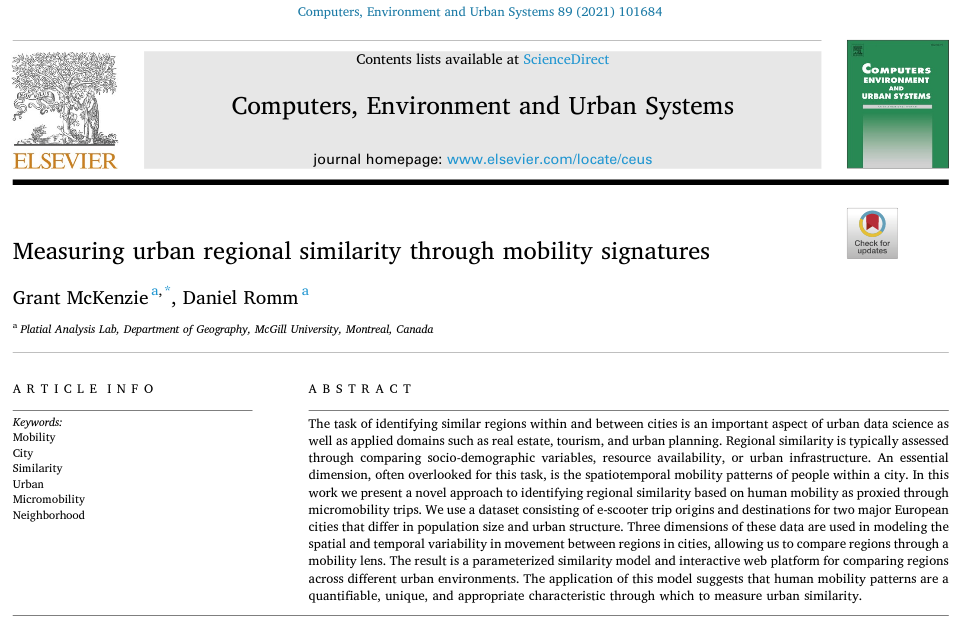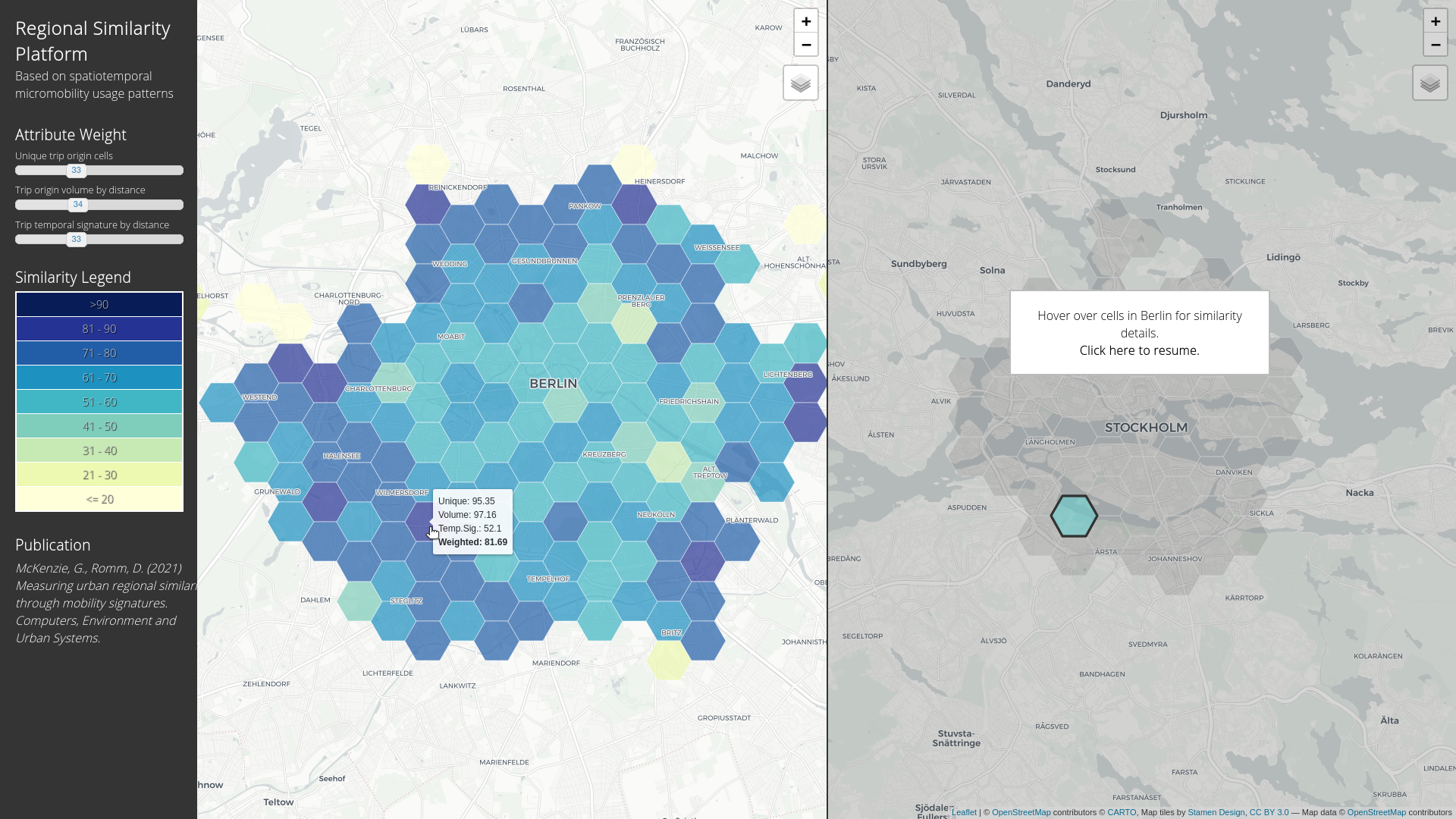A new paper entitled Measuring urban regional similarity through mobility signatures by Professor Grant McKenzie and Master’s student Daniel Romm was recently accepted for publication in the journal Computers, Environment and Urban Systems. The paper presents a novel method for identifying similarities and differences between regions of cities based on the human mobility patterns of visitors and inhabitants. In this paper, the authors use micromobility e-scooter trips as a proxy for human mobility.
The abstract for the paper: The task of identifying similar regions within and between cities is an important aspect of urban data science as well as applied domains such as real estate, tourism, and urban planning. Regional similarity is typically assessed through comparing socio-demographic variables, resource availability, or urban infrastructure. An essential dimension, often overlooked for this task, is the spatiotemporal mobility patterns of people within a city. In this work we present a novel approach to identifying regional similarity based on human mobility as proxied through micromobility trips. We use a dataset consisting of e-scooter trip origins and destinations for two major European cities that differ in population size and urban structure. Three dimensions of these data are used in modeling the spatial and temporal variability in movement between regions in cities, allowing us to compare regions through a mobility lens. The result is a parameterized similarity model and interactive web platform for comparing regions across different urban environments. The application of this model suggests that human mobility patterns are a quantifiable, unique, and appropriate characteristic through which to measure urban similarity.
Click through to check out the mobile platform: https://platial.science/citysim/


